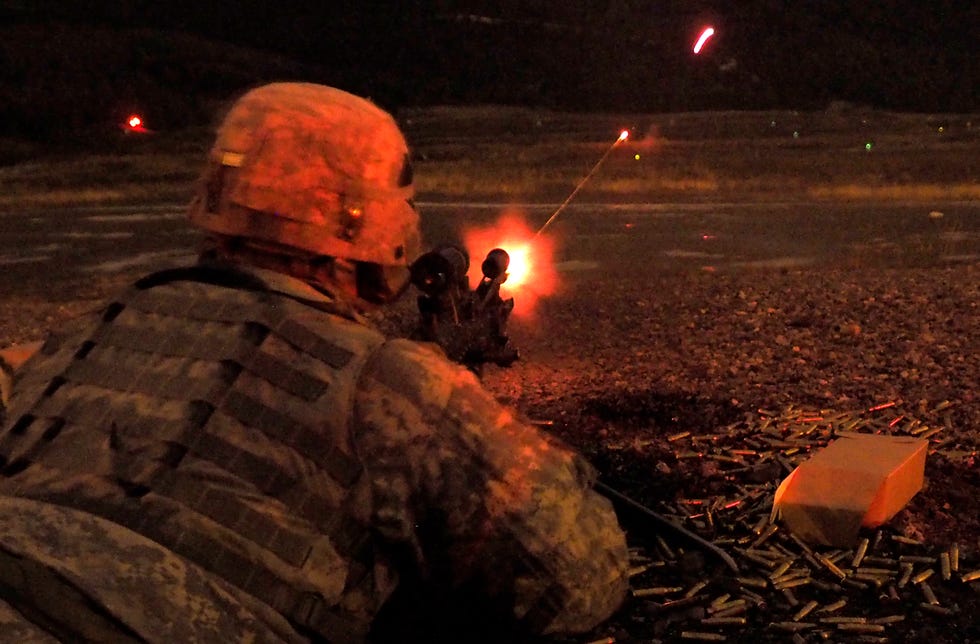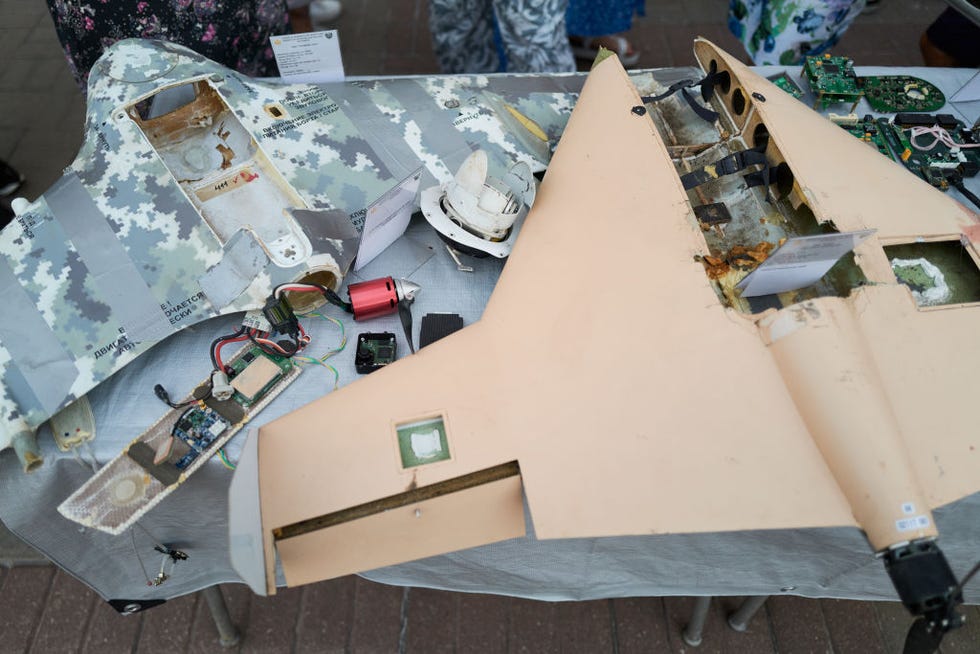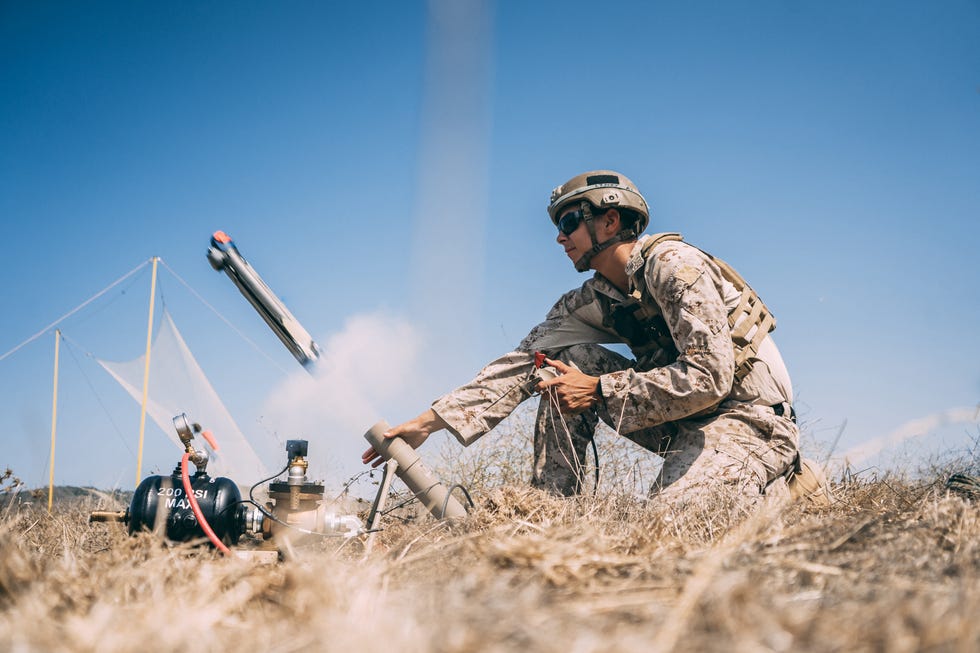KYLE MIZOKAMI

In the near future, American infantry troops will have the ability to search for and eradicate targets dozens of miles behind enemy lines. Under Project LASSO, the U.S. Army plans to arm its Infantry Brigade Combat Teams with loitering munitions—drones that not only scout the battlefield but can destroy any worthy target they come across. Loitering drones like the Switchblade 600 will allow even troops on foot to be able to hit targets dozens of miles away.
The Queen of Battle
Among armies the infantry is known as the “Queen of Battle.” One reason is because the infantry are, like the queen in chess, the decisive piece that wins or loses the game. Similarly, infantry are slow, moving on foot much of the time.
The need for lightweight, man-portable weapons affects infantry firepower. A battalion of 600 soldiers, for example, can reach out and destroy tanks at ranges of up to 8,200 feet, the range of a Javelin anti-tank missile. It can reach out with M240 medium machine guns up to 5,900 feet and drop 81mm mortar bombs on targets at ranges of up to 3.6 miles.

Night firing a M240 medium machine gun on Grezelka range at Joint Base Elmendorf-Richardson, Alaska, 2015.U.S. Air Force photo/Justin Connaher
Targets beyond those ranges must be serviced by air or artillery support. The problem is that modern warfare moves so fast, with tanks capable of driving cross-country at 30 miles an hour, that it’s better to identify threats sooner rather than later. Typically, that also means farther away. Every battalion has a dedicated unit of scouts, but they are largely incapable of detecting targets behind enemy lines.
Loitering Munitions
A relatively recent variation of the military drone is the loitering drone. A loitering drone is much like a typical reconnaissance drone, with a two-way video link that allows the operator to use the drone to look for the enemy. This allows the operator the search in real time, responding to events as they happen.
Loitering drones don’t carry munitions like the Hellfire anti-tank missile: they are the munitions. A loitering drone is equipped with a high explosive warhead to attack enemy infantry and other unarmored targets, or a shaped charge warhead to attack armored vehicles. Once the drone locates a worthwhile target, the operator can immediately order the drone to attack.

Russian loitering munitions are on display on August 23, 2023 in Kyiv, Ukraine.Pierre Crom//Getty Images
The loitering part comes from the drone’s ability to just fly around in circles, waiting for someone else to spot the enemy, whereupon it would quickly move to intercept. One drone might search for the enemy while others wait in the wings. A typical loitering drone can fly for up to 40 minutes before it runs out of fuel or power.
LASSO ‘Em
In May 2023, the U.S. Army initiated Project LASSO, which stands for Low Altitude Stalking and Strike Ordnance and is meant to rapidly procure a drone for the service’s Infantry Brigade Combat Teams.
PEO Soldier, the Army organization that researches and develops equipment for Army ground troops, describes LASSO as “a man-portable, tube launched, lethal payload munition, unmanned aerial system. It includes an electro-optical/infrared sensor, precision flight control, and the ability to fly, track, and engage non-line-of-sight targets and armored vehicles with precision lethal fires.”
The Army envisions LASSO as consisting of three pieces of equipment: the reusable launch tube, the drone itself, and a reusable fire control station. This is not unlike a Javelin anti-tank missile, for example, which consists of a launch tube with a missile factory-sealed inside and a reusable fire control unit. According to DefenseOne, the first LASSO drones will go to Army units in the first half of 2024.
One example of a loitering drone is the AeroVironment Switchblade 600, which is launched from a firing tube, flies for up to 40 minutes, and can operate up to 24 miles from the control station. The drone uses a push propeller to cruise at 70 mph, with the ability to sprint at up to 115 mph. The Switchblade 600 is equipped with a Javelin missile warhead, making it deadly to tanks. The Switchblade 600 and the smaller Switchblade 300 have been sent to Ukraine as part of the U.S. military aid effort, where they are prized for being able to hunt and destroy Russian armor.

U.S. Marine Corps Cpl. Jonathan Altamirano, a fire support Marine with 1st Air Naval Gunfire Liaison Company (ANGLICO), I Marine Expeditionary Force Information Group, launches a Switchblade 300 lethal miniature aerial missile system during an exercise at Marine Corps Base Camp Pendleton, California, September 2, 2020.Cpl. Jennessa Davey
U.S. Army Loitering Munitions in Action
Picture this possible war scenario: An enemy tank brigade is pushing into territory held by American troops. One of three tank battalions is barreling down on a U.S. light infantry battalion dug in just over the border.
The U.S. battalion includes four LASSO firing units. As scouts report the rumble of heavy diesel engines, the infantrymen launch four, then eight loitering drones. Seven of the drones circle nearby in a loitering pattern while the eighth peels off in the direction of the enemy armor.
Four miles ahead, the lone drone spots a column of enemy battle tanks, escorted by an air defense vehicle. Throughout history tanks have often “out-sticked” infantry, shooting at them before they can shoot back, but this time the American LASSO drones strike first.
The air defense vehicle’s radar-directed autocannon manages to shoot the drone out of the sky, but not before the column’s location is fixed. The remaining drones descend upon the enemy tanks in two waves, destroying the air defense vehicle and three tanks, including the battalion commander’s tank. The tank assault stalls, buying the light infantry precious time to tune their defenses to the strength and direction of the enemy advance.
The Takeaway
Loitering drones are a standout lesson from the Ukraine war, one the U.S. Army is eager to turn into a lethal capability. The farther away the enemy is destroyed the safer it is for the American forces opposing them. LASSO drones will be yet another tool in the toolbox of U.S. troops, but one that will give them the ability to strike important targets like tanks farther than ever before.
No comments:
Post a Comment